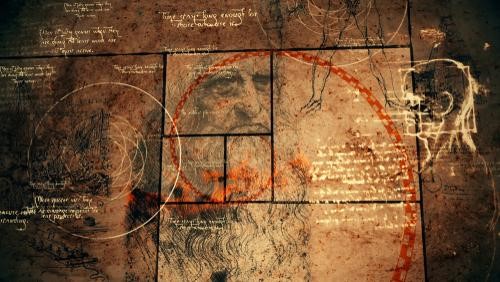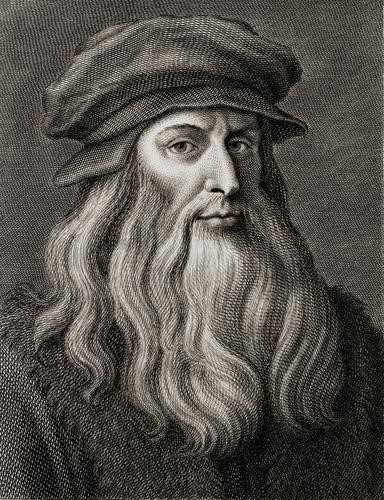“What have the Romans ever done for us?”
The famous words uttered by the cast of Monty Python in the hit 1979 film ‘Life of Brian’. What did the Romans ever do for us? Well apart from roads, currency and culture, pretty much nothing. So what did Leonardo Da Vinci do for us? Art, physics, culture and pretty much nothing.
In this article we take a look at the impact Leonardo Da Vinci has had on our world, including a look at Dan Brown’s incredible book, which was adapted to screen by Ron Howard in 2006.
Who was Leonardo Da Vinci?
Da Vinci was one of the catalysts behind the European Renaissance, born in 1452 the Italian was a painter, sculptor, architect, inventor, engineer and draftsman amongst many other things.
Artistically, his biggest contributions to the world were his depictions of Mona Lisa and the Last Supper, which adorns the walls of Santa Maria delle Grazie in Milan. Da Vinci’s artwork has become synonymous with the art world and students still study his works with great vigour to this day.
However one of his biggest contributions to the world came when he developed plans for a flying machine. Da Vinci studied the physiology of the bat and drew up plans for a machine that coupled the plans of a bicycle and a helicopter.
Considering Da Vinci was born 551 years before the Wright Brothers first took to the skies, Da Vinci’s ideas were revolutionary. In more destructive ways, Da Vinci also pioneered the use of devastating war materials such as trebuchets, enormous crossbows and much more.
Da Vinci wasn’t just content with designing flying machines and incredible works of art, he was also interested in furthering the worlds understanding of the human body. Through animal and human dissections, Da Vinci developed diagrams of the fetus, uterus and heart that are still used today in modern medicine.
Read on to see how Da Vinci’s discoveries and legacies shaped the world we live in.
Medicine
In 1500, Da Vinci became the first man to record the thyroid in anatomical depictions, and thus confirm it as an organ rather than a pathological aberration. In his recordings, Da Vinci mused, “These glands are made to fill the interval where the muscles are lacking and hold the trachea away from the neck bones as though they were a cushion.”
Unfortunately, Da Vinci’s musings were wrong, as scientists now know the thyroid secretes hormones to regulate the body’s temperature, weight and energy levels. However, his depictions of the thyroid were incredibly important for future understanding and treatment of thyroid problems in the modern world.
The Parachute
People readily associate the parachute with armies, and notably those of the allied forces that parachuted over Normandy in the mid 1940’s. However, the technology behind parachutes was first recorded in the 15th century by Leonardo Da Vinci.
He designed plans for a parachute consisting of sealed linen cloth held by a pyramid of wooden poles, which was meant to enable any man to throw himself from a great height without suffering any injury.
Unfortunately, Da Vinci was dead by the time his invention was realised in 1783, but his forward-thinking years earlier laid the foundations for future inventors to implement the parachute.
Engineering
Further to the great man’s plans for aircraft, there were also Da Vinci’s ideas for sprawling bridges – which weren’t realised until 2001 and for incredible war machinery.
One of his most startling inventions was a giant crossbow that required a small army of men to operate. Yet it wasn’t just war machines and bridges that were borne of his work, there were plenty of other inventions that relied on his pioneering trigonometry work.
Unexpected Da Vinci Legacies
Film & book
Dan Brown rose to prominence in 2003 with his novel entitled ‘The Da Vinci Code’, which took its name from the first murder in the book. The victim was discovered in the Louvre, naked and poised in the same position as Da Vinci’s famous drawing ‘Vitruvian Man’.
The book explores an alternative history of religious fervour centring on the Merovingian Kings of France. In 2007 the book was adapted into a film by Ron Howard, which starred Tom Hanks amongst other well-known actors.
Although initially tenuous, the link between Da Vinci and the book/film led to a renewed interest into the works of the Italian Renaissance inventor. Documentaries about his inventions and discoveries began to surface on the BBC and ITV.
Games
The fabled Italian inventor has even been channelled in the world of gaming. The online slot game ‘Da Vinci Diamonds’, has been dubbed a ‘stylish masterpiece’, it gains attention for being truly unique from any other game in the industry.
Many online slot machines fail to find a USP that separates itself from the competition, but this game contains caricatures of Da Vinci’s work to give players an insight into the great man’s previous work.
“I’m not content to merely capture the world, I want to change it.”
Those were the words spoken to Ezio Auditore in Ubisoft’s smash-hit game Assassins Creed II. The console game followed the life of an anti-Templar assassin in Renaissance Rome, during the main characters progress he encountered several famous characters, one of them being Leonardo Da Vinci.
In the game Da Vinci used Ezio as a puppet to test his latest inventions, including early prototypes for grenades and an imagined version of Da Vinci’s great flying machine.
<iframe width=”560″ height=”315″ src=”https://www.youtube.com/embed/_P6NCXUSSRc” frameborder=”0″ allow=”autoplay; encrypted-media” allowfullscreen></iframe>
Summary
If you have a conversation about technology with your friends and hear them utter the phrase, “What did Da Vinci ever do for us?” Now you know the answers.
The incredible Italian visionary was one of the first men to depict the anatomy of the human body in the 15th century, paving the way for enormous medical advancements throughout the years. He pioneered some of the greatest artworks of this millennia and foresaw the invention of the ‘flying machine’.
With a little exploration and research, it’s possible to see the astonishing impact that Leonardo Da Vinci has had on 21st century Britain.







